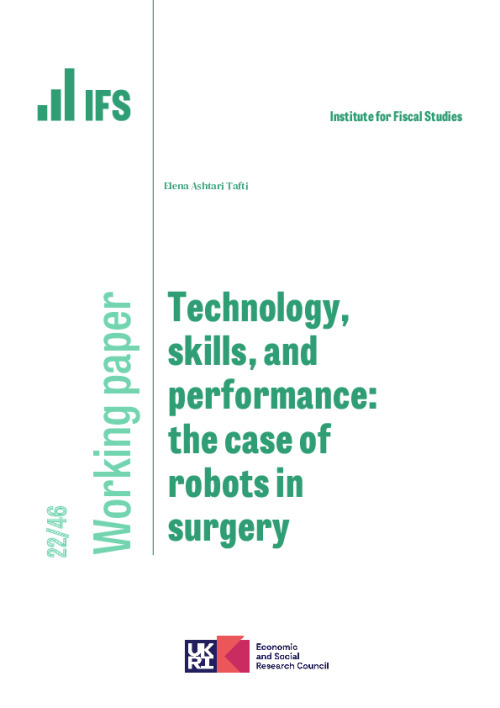This paper investigates the potential of new technologies to reduce disparities in the provision of healthcare services. Differences in providers’ skills may cause variation in patient outcomes. The adoption of innovations, like robots, can attenuate this problem if technological gains are decreasing in users’ skills or may exacerbate existing variation in performance otherwise. I show that, in England, the diffusion of surgical robots coincided with an improvement in average surgical performance and a convergence in outcomes between high and lower-skilled surgeons for prostate cancer patients. I study whether this pattern can be attributed to the adoption of robots using the universe of inpatient admissions to the National Health Service (NHS). To identify the effects of robotic surgery on patient outcomes, I exploit quasi-random variation in the geographic allocation of robots, allowing for selection and heterogeneity in treatment effects. I find that robots shorten patients’ length of stay in hospital and decrease the incidence of adverse events from surgery, but their effects significantly depend on surgeons’ skills. The robot has little impact on the performance of highly skilled surgeons, while lower skilled surgeons gain the most from it. I also uncover a strong pattern of negative selection on both observable and unobservable characteristics. Although the attainable gains are higher for lower-skilled surgeons, they use the robot the least. My results suggest that the potential benefit of a new technology largely depends on how it combines with the skills of the individual users.










